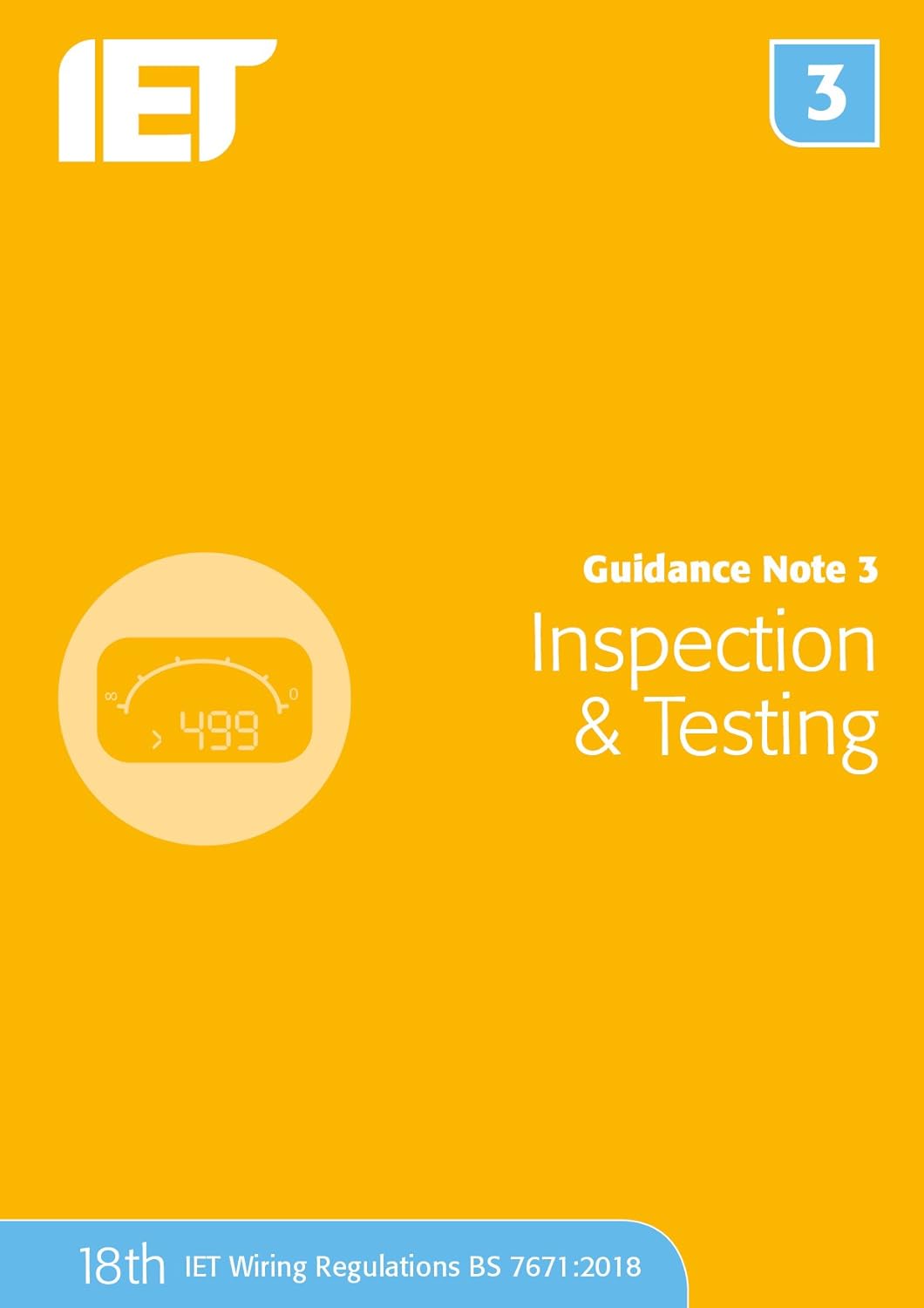
Guidance Note 3: Inspection & Testing (Electrical Regulations)
FREE Shipping
Guidance Note 3: Inspection & Testing (Electrical Regulations)
- Brand: Unbranded

Description
For further information on the different RCD Types and the selection process, see IET Wiring Matters article (Issue 77 September 2019), ‘Which RCD Type?’ People are well aware that guidance notes are for guidance. However the guidance notes should not be contradicting the regs, especially when they are both produced by the IET. This publication ONLY details information regarding the installation and testing of electrical systems In similarity to the initial task in the first part of the practical assessment, the periodic inspection section requires candidates to examine a simple installation. Again, this will contain a few demonstration circuits and a single-phase consumer unit.
Since the Electrical Safety Standards in the Private Rented Sector (England) Regulations 2020 came into force on 1 June 2020, the IET technical helpline has been inundated with calls related to the Electrical Installation Condition Report (EICR). This previous IET Wiring Matters article provides further information. In this article, we are going to answer some of the most common questions received and dispel some of the myths associated with the EICR. What is an EICR? The written part of the assessment is particularly challenging due to the nature and construction of question sets. The themes and specific conditions captured in the first question of each, will correlate through to the second and third questions. This means that if the initial question is approached incorrectly, it could scupper responses for the remaining two. Therefore, although this is useful from a consistency perspective, it still presents delegates with a significant scoring risk. By ‘building’ question content up, examiners are looking to assess whether candidates have a firm grasp on sequencing and process flow. Candidate approach NOTE 2: Regulation 16 of the Electricity at Work Regulations 1989 requires persons to be competent to prevent danger and injury. The HSE publication HSR25 provides guidance on this.’ This is an online test. Therefore, if students are sitting the assessment remotely, they’ll need to ensure they have ready access to an internet-enabled device. This is often labelled as the easiest part of the examination timetable, therefore candidates ideally need to acquire a high score in this assessment. This will give them a decent platform to take on the remaining, more complex, challenges. Delegates will commence their practical assessment journey by conducting an inspection of a simulated electrical installation. This will be a relatively basic contraption, and be made up of just several demonstration circuits and a single-phase consumer unit.Care should also be taken when dismantling any equipment and safe isolation procedures should always be followed when needed. Working the other way, no breaker is made spot on the limit of the breaking range, so when we assume 20 times the rating for a D type, we are being unduly pessimistic, on average one out of the box will be more like 15. But that may vary with batch and the age of the breaker, as the moving parts oxidise and get a bit stiffer. The minimum IP rating for electrical equipment installed in zone 1 of a location containing a bath or shower is IPX4. A bathroom fan needs to be 12 V extra-low voltage Given that an RCD may take up to 0.3 seconds (300 ms) to disconnect it would appear at first glance that some disconnection times in Table 41.1 may not be achievable, for example, the maximum disconnection time for some final circuits on a TT earthing system is 0.2 seconds (200 ms), as shown in Table 3. However, a note under the table indicates that earth faults are of negligible impedance and it follows that disconnection times would be commensurately higher since a value of, for example, a residual current of 60 mA would be expected to provide a disconnection time of 150 ms and 40 ms (0.04 seconds) for a residual current of 150 mA, as shown in Table 2. Therefore, an operating time of 300 ms would be considered acceptable for a TT earthing system.
BS EN 62423:2012+A11:2021 Type F and type B residual current operated circuit-breakers with and without integral overcurrent protection for household and similar uses. Under the same time constraints as the earlier assessment, delegates will be required to again visually identify twelve faults that do not comply with the bs7671 regulation. These allude to the same issues articulated earlier. Again, it’s worth remembering that the previous list was not exhaustive. Periodic inspection and testing with resultant certificationohms. This identifies a definite fault, as this would suggest a ‘short’ (undesirable) circuit connection between conductors. It is not normally necessary to inspect and test every single circuit, point and accessory within the installation due to the size and the costs that may be involved. However, you should inspect and test enough of the installation to be able to form an educated opinion on its overall condition. Delegates will then have to apply the correct testing sequence, which will look like the following: A typical spec is more like this maker's data for the LTW 425 - and that is a dedicated loop tester, not a compromised design to make a multi function tester all fit in one box, they tend to be worse.
- Fruugo ID: 258392218-563234582
- EAN: 764486781913
-
Sold by: Fruugo